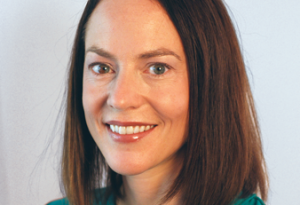
by Anna Gratz Cockerille
The winding down of a school year brings both reflection on what has passed and hopes for what is to come. In schools across the country, administrators and staff developers are wrapping up the year by gathering teachers in planning meetings to take stock and look ahead.
To be as effective as possible, planning meetings need to be carefully, er... planned. Here are a few steps administrators can take to make sure that end of year planning meetings go as well as possible.
- Identify clear goals for the outcome of the meetings. Whether the goal is to simply reflect on what went well and what didn’t this year, or to help all teachers understand changes the curriculum for the year ahead, or to set dates for units of study across the year, or to set dates and identify materials needed, the goal(s) should be clear to all.
- Set aside enough time so that the goals can be reached. In most cases, an hour or even two is simply not enough time to reflect on the year past and to plan an entire curriculum for the year ahead. In most cases, a half-day is better.
- Prepare materials. In particular, make sure teachers have access to curriculum documents for the next year. If you are using the Units of Study, ask teachers to bring their kits. For more support on planning a year-long curriculum using Units of Study, click here.
- Encourage teachers to bring data. The best planning is always based on analysis of student work and teacher reflections on which parts of the curriculum worked well and which need fine-tuning. Ideally, teachers should bring a variety of work from across the school year. Rather than bringing stacks of work, it will be most effective if teachers bring samples from a few students that are representative of the range of work in the classroom. Teachers should also bring tools they’ve used to analyze the data, such as rubrics or checklists that list skills of proficiency.
- Encourage teachers to bring tools for planning, preferably digital. Teachers should bring calendars, and have a way to share files and view planning documents.
- Set aside extra time for discussion and reflection. The best planning meetings are ones in which all voices are heard. You might even set aside a few minutes at the start of the meeting for teachers to write to reflect on the year past before launching the discussion.
At this week’s TCRWP Twitter Chat, staff developer Alissa Reicherter and senior lead staff developer Brooke Geller will lead a discussion geared toward teacher leaders, coaches, and administrators on how best to wrap up the year and think about the next. We hope to see you there!
♦ ♦ ♦ ♦
Each Wednesday night at 7:30 pm eastern, The Teacher's College Reading and Writing Project hosts a Twitter chat using the hashtag #TCRWP. Join @missalissanyc & @brooke_geller tomorrow evening to chat about wrapping up the school year for teacher leaders, coaches, and administrators.
♦ ♦ ♦ ♦
Not on Twitter? Take Heinemann’s free Twitter for Educators course here.
 Anna Gratz Cockerille, Coauthor of Bringing History to Life (Grade 4) in the Units of Study for Teaching Writing Series.
Anna Gratz Cockerille, Coauthor of Bringing History to Life (Grade 4) in the Units of Study for Teaching Writing Series.
Anna was a teacher and a literacy coach in New York City and in Sydney, Australia, and later became a Staff Developer and Writer at TCRWP. She served as an adjunct instructor in the Literacy Specialist Program at Teachers College, and taught at several TCRWP institutes, including the content literacy institute, where she helped participants bring strong literacy instruction into social studies classrooms. Anna also has been a researcher for Lucy Calkins, contributing especially to Pathways to the Common Core: Accelerating Achievement (Heinemann 2012), and Navigating Nonfiction in the Units of Study for Teaching Reading, Grades 3–5 series (Heinemann 2010). Most recently, Anna served as an editor for the Units of Study for Teaching Reading, K–5 series.


